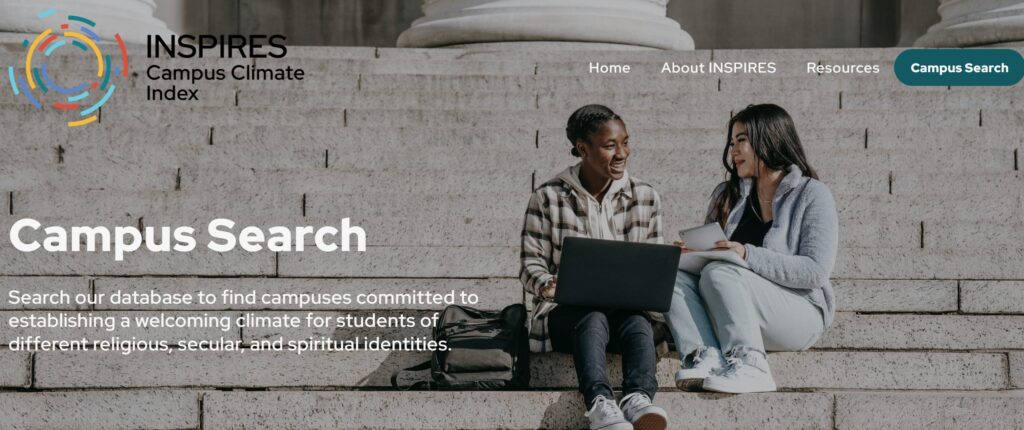By Kelly Rosinger and Dominique J. Baker
Colleges and universities nationwide turned to test-optional admission policies during the COVID-19 pandemic. In 2021, with funding from the Bill & Melinda Gates Foundation, our research team at the College Admissions Futures Co-Laborative set out to examine test-optional implementation during the pandemic, how colleges varied in test-optional policy implementation, and the implications of test-optional admission for college selectivity and enrollment at selective colleges and universities.
We defined selective colleges and universities as those that admitted fewer than half of applicants over three consecutive years, on average. For these 186 public and private, not-for-profit four-year institutions, we spent two and a half years collecting detailed data on how colleges implemented test-optional admission during the 2021-22 admission cycle (the first selective college admission cycle after the pandemic began) using archived historical websites.
History of Test-Optional
At selective institutions that receive more applications from academically qualified students than they will admit, college admission test scores frequently have been used as one of many admission considerations. Prior to the pandemic, a movement had begun among selective institutions to reconsider the role of college entrance exam scores in the admission process. The movement started with some private liberal arts colleges implementing test-optional admission and then expanded in the early 2000s to include some private research universities, highly ranked institutions, and a few public universities. Motivations for this movement included inequitable patterns in test taking, test preparation, and test scores that systematically disadvantaged racially minoritized and low-income students in the admission process.
Prior research on test-optional admission offers some evidence that test-optional policies, at least in some contexts, can expand access among underserved students, but some evidence also indicates that they may benefit institutions by potentially expanding the numbers of applications these institutions receive and the average test scores colleges then report to rankings agencies.
With the pandemic disrupting high school students’ opportunities to safely take the SAT or ACT, virtually all selective colleges and universities turned to test-optional admission to remove a major barrier students faced in applying to college.
Key Takeaways
Our study contributes important national evidence regarding the scale and scope of test-optional admission. We found that 90 percent of selective colleges and universities implemented some type of test-optional policy during the pandemic and, by contrast, just 20 percent of these institutions had implemented test-optional admission prior to the pandemic. Even though a large share of institutions made tests optional, the implementation of these policies varied substantially from college to college. Just over three-quarters of selective colleges went test-optional by making test scores optional for applicants, 4 percent went test-flexible by requiring applicants to submit an alternate exam or materials in place of the SAT or ACT, 10 percent went test-free by not considering the SAT or ACT in admission, and 10 percent continued to require test scores.
We also found that even at colleges with test-optional admission, 14 percent continued to require test scores from some applicants, such as international applicants, homeschooled applicants, applicants to some academic programs, or applicants below some GPA threshold. Even if colleges were test-optional for all applicants, we sometimes found language on college websites indicating that test scores were strongly encouraged or recommended. Fifteen percent of the selective colleges we studied continued to require the SAT or ACT for scholarship consideration even though they were test-optional for admission, and 10 colleges with some type of test-optional policy required matriculating students to submit a test score.
Merging our test-optional dataset with publicly available data from the Integrated Postsecondary Education Data System, we were able to explore how test-optional admission related to difference in selectivity and enrollment outcomes. These preliminary findings, available in our working paper, suggest that the implementation of any type of test-optional admission policy was associated with an increase in enrollment among Black students, and the increase in access was concentrated in moderately selective colleges admitting between half and 30 percent of applicants. At the most selective colleges we studied — those that admitted fewer than 30 percent of applicants — we found that implementing any type of test-optional policy correlated to an increase in the number of applications colleges received, on average. At these highly selective colleges, we did not find consistent evidence of gains in college access.
We found that differences in how colleges implement test-optional policies likely relates to outcomes. In particular, gains in enrollment among Black students tended to be largest at colleges that extended test-optional policies to all applicants and that were test-optional for scholarships.
Implications for Test-Optional Practice and Policy
Our large-scale, national study of test-optional policy implementation during the pandemic highlights the widespread implementation of these policies and reveals that test-optional policies in practice differs substantially from institution to institution. Colleges vary in the type of test-optional policy they implement (test-optional, test-flexible, test-free), whether the policies extend to all applicants versus being required for some applicants, and whether the policies extend to scholarship consideration or matriculation.
Even at institutions with test-optional admission, messages about taking and submitting test scores were confusing, often strongly encouraging students to take and submit test scores.
The differences in how colleges implement test-optional admission and the lack of clear messaging around policies likely add confusion to an already complex and stressful time for students and their families.
The host of ways colleges can implement test-optional admission have implications for the outcome of these policies. Our early results suggests that test-optional policies relate to increased access among Black students, especially at moderately selective colleges and when the policies apply to all students and to scholarship consideration. We interpret this as evidence that test-optional policies, in some contexts, can be one strategy selective colleges can use to promote racial equity. As colleges navigate an environment in which the use of race-conscious admission is more constrained, admission policies that can remediate past racial injustices are increasingly important. Yet, we caution that test-optional policies on their own are not a silver bullet when it comes to addressing racial inequities that stem from centuries of unequal opportunity. We urge institutions to simultaneously consider how recruitment, admission, financial aid, and student services can better support racially minoritized students.
Kelly Ochs Rosinger is an associate professor of education and public policy at Penn State, where she examines the barriers students face going to and through college and how postsecondary policies and practices shape educational outcomes. She was a partner, along with NACAC, in the Equity Implications of Test-Optional Admission Policies initiative, funded by the Bill and Melinda Gates Foundation.
Dominique J. Baker is an associate professor of education and public policy at the University of Delaware, where she studies the way that education policy affects and shapes the access and success of minoritized students in higher education. She was a partner, along with NACAC, in the Equity Implications of Test-Optional Admission Policies initiative, funded by the Bill and Melinda Gates Foundation.









 It is getting closer to the fall semester and your application numbers are below last year’s count.
It is getting closer to the fall semester and your application numbers are below last year’s count.


